| 1 | Carnac Island (tiger snakes) |
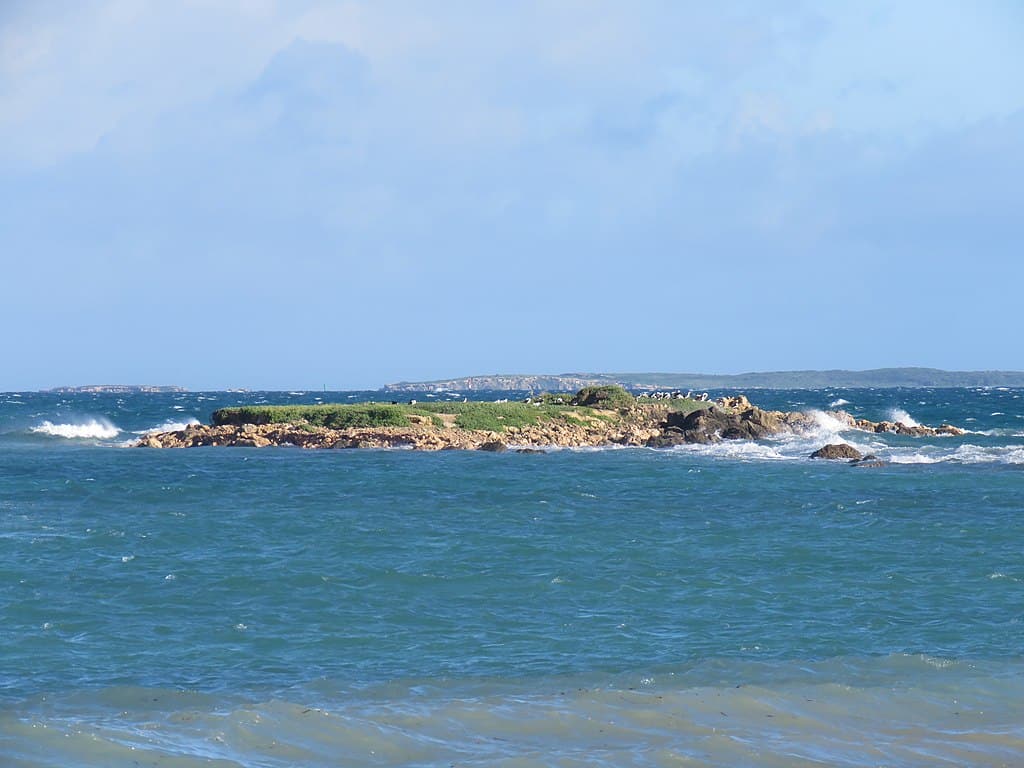
A west Australian island originally used as a whaling station in 1836, but abandoned shortly afterwards. Carnac Island lies 10km southeast of the port city of Fremantle, and later found use as a prison for rebellious indigenous Australians. These days, it’s an uninhabited wildlife haven with occasional tourist boat stop offs. There are seagulls galore, plenty of king skinks, and sealion colonies resting on its beaches.
But there’s also another resident – 400 tiger snakes. There isn’t a single sign warning tourists, but step away from the pristine beaches and you’ll find an average of 1 tiger snake every 8 metres. The island is crawling with this snake, the 5th deadliest in the world.
The origins are a mystery. Some think that travelling snake showman Rocky Vane dumped his entire stash on the island in 1930, after his wife was bitten and died. Some think that they’ve been there for thousands of years, and swam from Garden Island 2.2 miles away. In 2006, David Attenborough visited, and noticed that the tiger snakes were often blind, pecked in self defence by the nesting seagulls which they hunt. Despite this, they’re thriving; they’ve become more reliant on smell and are constantly flecking their tongues.
| 2 | Isle Tortuga (rattlesnakes) |
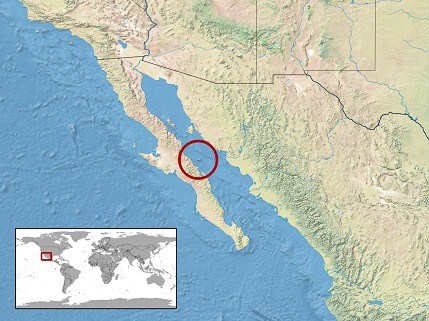
This volcanic island is located in Baja California, northwest Mexico. It covers 4.4 square miles, and is centred around a large volcanic caldera, which has been dormant for an undetermined amount of time. Tourists often dock to explore the white beaches, or go snorkelling in the clear waters overlooked by palm trees. But the locals stay far away, and that’s because Isla Tortuga is crawling with rattlesnakes. It’s been dubbed the biggest rattlesnake pit in the world, with every corner covered except the volcanic crater.
These rattlesnakes are a unique form – Crotalus atrox tortugensis, a subspecies of the western diamondback rattlesnake. The black blotches cover less space, and its head is slightly shorter. They probably originated from a handful of swimmers that reached the island, before slowly spreading to every single corner.
In 2022, the worst came true when 3 scientists were stranded on the island. They’d paid a local boatman to ship them out, but he failed to return, leaving them exposed and starving on the beach for 3 days. They were saved by a navy vessel, and fortunately didn’t bring any rattlesnake stowaways aboard.
It’s a self perpetuating situation – there’s little human development on the island because it’s a rattlesnake pit, and therefore it continues to be rattlesnake pit. Their top prey is the Dickey’s mouse (Peromyscus dickeyi), the only mammal on the island.
| 3 | Ilha da Queimada Grande, Brazil |
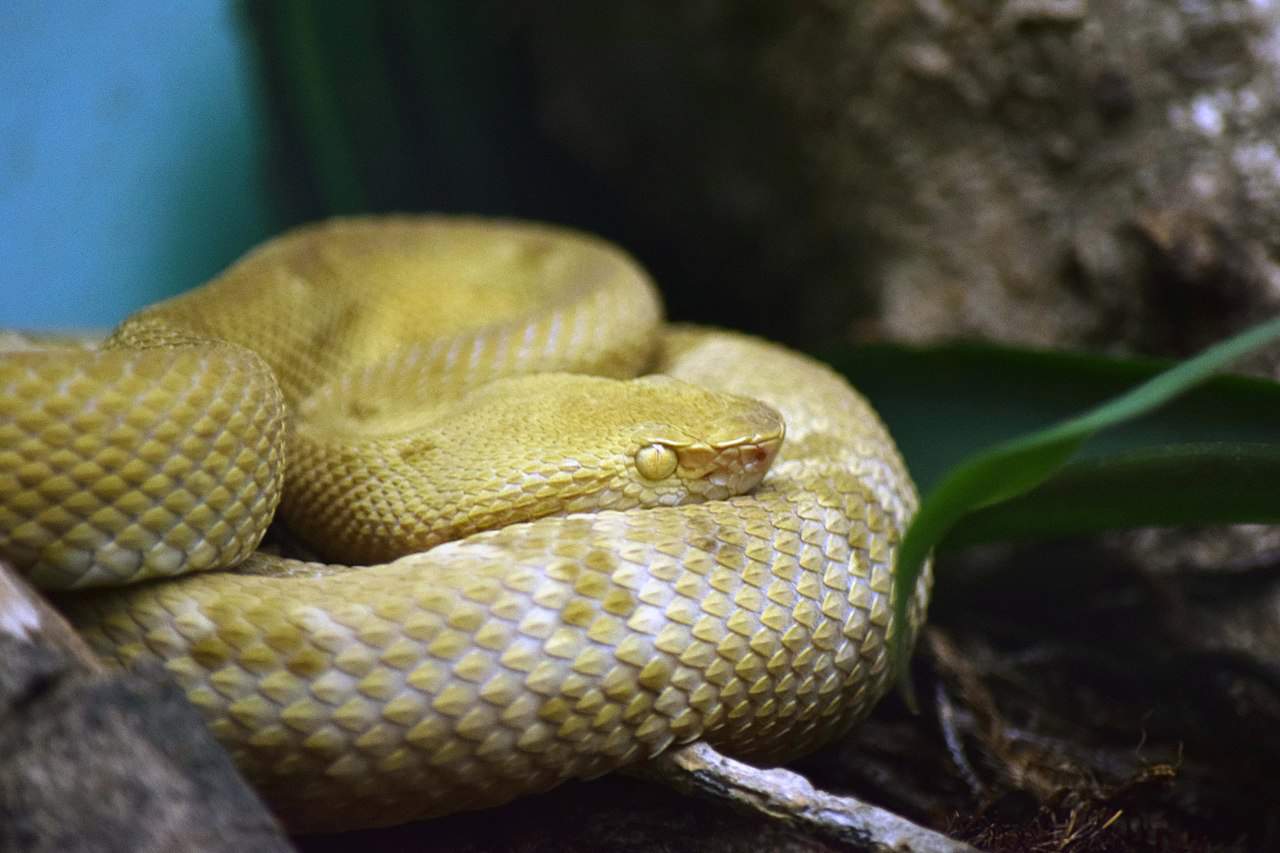
If the seven wonders of the world was flipped on its head and became the seven hells on earth, this would probably be one of them. Ilha da Queimada Grande is located off the southeast coast of Brazil and is strictly off limits to the public. It’s a stormy island of high towering cliffs, and home to an endangered species – Bothrops insularis, aka golden lancehead viper. This snake became isolated thousands of years ago when ice caps melted and sea levels rose, but now, they cover the entire island.
There’s 2000-4000 golden lanceheads on Ilha da Queimada Grande, and the densities can reach 1 per square meter. The venom of this snake can kill a human within one hour, and at 90 miles off shore, you’ll be dead long before a rescue helicopter lands.
According to local legend, a settlement was built in 1909, which vanished by the 1920s as the residents suffered horrific death by snakebite one by one. Today, the sole building is a lighthouse, designed to guide researchers, who need legal permission to dock. If a boat crashed in stormy weather, then the survivors staggering ashore would only have one route forward – deeper into snake island.
| 4 | Mosambwa Island, Uganda |
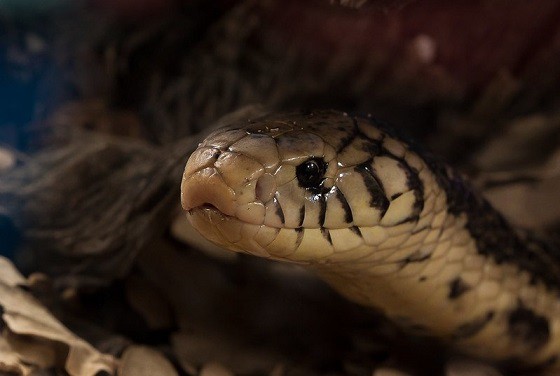
A forested island in the centre of Lake Victoria, Uganda. It’s home to 100 fishermen, but most importantly, approximately 2000 forest cobras, meaning that the snakes outnumber humans 200 to 1. The forest cobra can produce 500mg of neurotoxic venom per bite, but the fishermen consider them to be guardian spirits.
Mosambwa itself translates to “spirit” and the forest cobras are considered to be the island’s owners, not the fishermen. Sex is forbidden on the island, and so are women, to reduce temptation.
When 60 year old Emmanuel Katongole arrived to fish, he found a gigantic cobra under his pillow on his first night. The locals scolded him for “scaring off good luck”. A snake slithering into a house is a blessing on Mosambwa. Assure the snake that you mean no harm, and all will be well (supposedly). Mosambwa Island is also home to 150,000 birds, and the constant sound of squawking can be deafening. Check out this 2 minute video footage of this human-snake paradise.
| 5 | Main Duck Island, Canada |
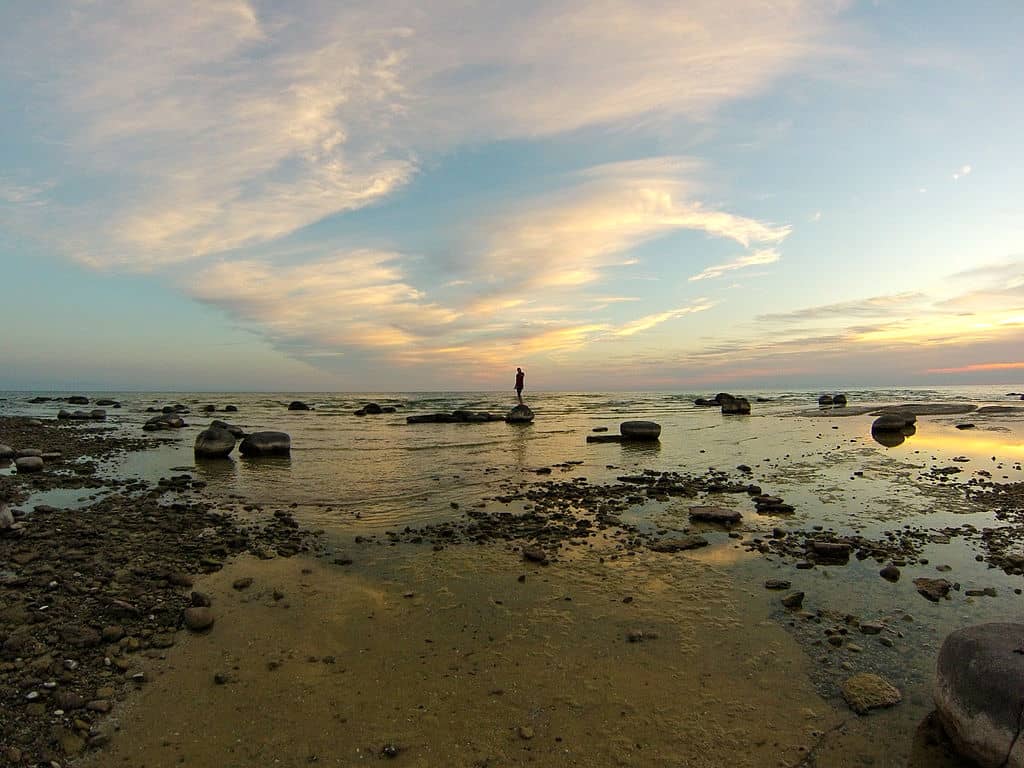
Located on the eastern side of Lake Ontario, one of a pair with Yorkshire Island, 12 miles from the nearest shore. The main animal here isn’t ducks, but the northern watersnake, along with the eastern garter snake. From small streams to shingle beaches, the island is filled with these harmless creatures. They tend to be larger than the northern watersnakes on the mainland, due to a lack of natural predators. Unusually, Main Duck Island has few birds, except the occasional migrating bald eagle. There are no human inhabitants either, just the occasional tourist boat.
From 1914 to 1978, a lighthouse operated on Main Duck Island, and the owners tried their best to control the snakes, to no avail. The waters surrounding the island are stormy, and many shipwrecks happened in the 19th century. The island was also home to prohibition era rum runner Claude “King” Cole, who owned a farm with horses, sheep and hogs that dealt the snake a temporary blow. These days, the snakes are estimated to be the most numerous in Main Duck Island history.
How do you find the snakes? Simply enter the island.
| 6 | St Thomas’ Island, Bulgaria |
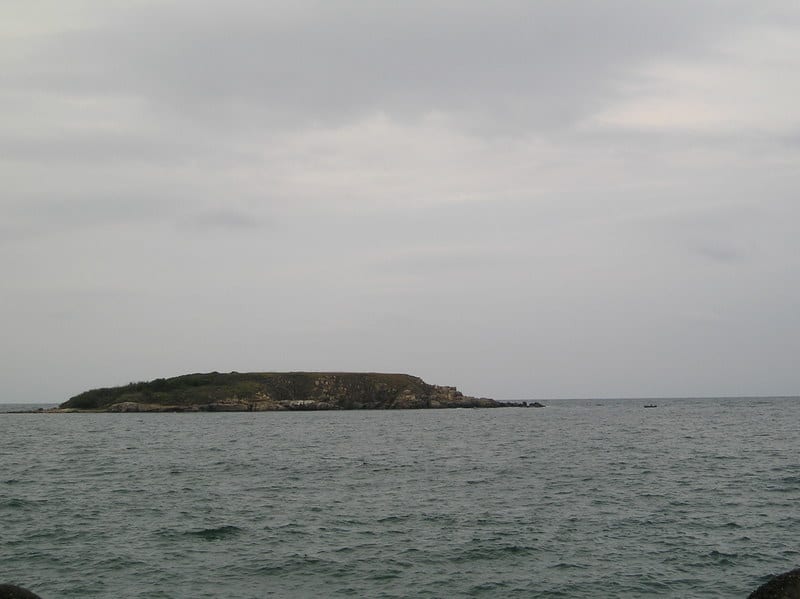
Also called Snake Island (again), this lies in the Black Sea, 4 miles north of the seaside resort of Primorsko. This is a theorised treasure island, as legends speak of pirates who stashed their booty in caves below, but never retrieved them. The island’s managers insist that no caves exist, but every year, treasure hunters turn up on missions. The island has been forced to hire security guards to deter them.
But that’s not the only guard. The waters surrounding this lake are filled with grey watersnakes, a harmless species, which can nevertheless look gigantic when magnified through a pair of diving goggles. This 50cm snake feeds on fish, and divers often brush against them and get a paralysing shock. The island itself also contains two viper species.
St Thomas’ island is also strange for being covered in cacti, a rarity in Bulgaria. The monarch of the day Tsar Boris III decided to import a stream of wild cacti, for reasons he never explained. They particularly grow on the island’s rock with a light covering of soil. Consequently, St Thomas’ is also a nature reserve – inhabiting this snake island is strictly forbidden.
| 7 | Pulau Kalampunian Damit |
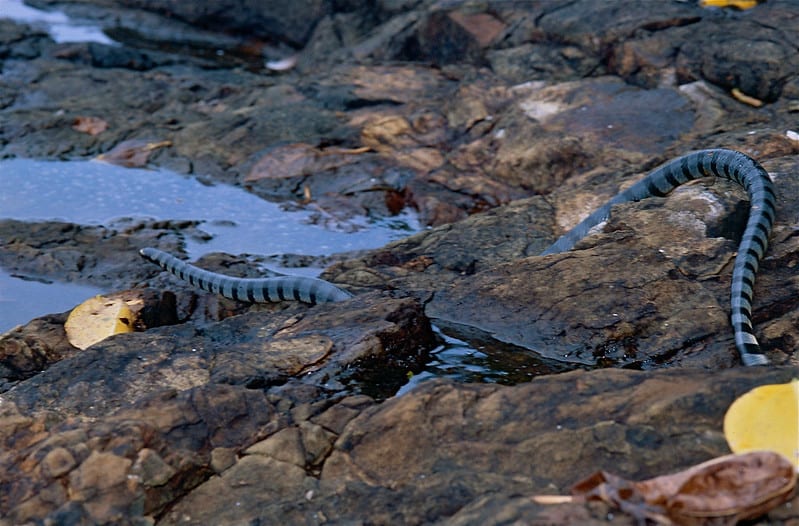
Located off the north coast of Sabah, Malaysia. Pulau Tiga, the largest of the 3 islands, was the scene of a Survivor shoot where contestants were left there for weeks and filmed. The smallest is Pulau Kalampunian Damit, and is swarming with banded sea kraits instead.
This species’ modus operandi is hunt for eels and fish in deep cracks underwater, prowling patiently. When it seizes and swallows a prey, it retreats to the shore to digest (and also shed skin), and Pulau Kalampunian Damit happens to be the outcrop they all head to. They come here to mate as well; it’s effectively their local base. This is a scenic island covered with silver pinsoa trees and rocks with white wave foam.
Because banded sea kraits stick to one base over the course of their life, rarely travelling, this outcrop is a consistent snake hub. A 1991 study examined the population, and arrived at 721 snakes, with an error of 38. The males outnumbered the females 3.9:1, probably because they were swarming in to mate. Banded sea kraits have tiny mouths and rarely bite, but possess an extremely toxic venom.
| 8 | Amedee Island |
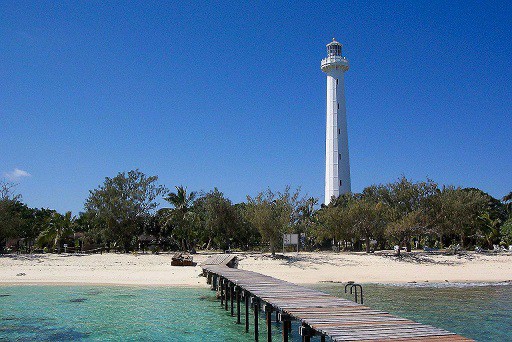
The tourist reviews for this island are full of horror at the amount of snakes slithering around, including in the toilet bowl! Amedee Island is located in the French territory of New Caledonia. Tourists are lured in by a UNESCO world heritage site called New Caledonia Lagoon, and the opportunity to swim with turtles. The blue skies never seem to end, and the towering Amedee Lighthouse (56 metres high) is also popular.
But the island’s dark secret is the banded sea kraits, which follow a similar life plan to Pulau Kalampunian Damit: grab food underwater, then swim to land in vast numbers. These snakes have caused a lot of nerves among tourists, but never bitten anybody on record, as they barely react to human presence. People can walk or swim right past these snakes, as they lie on rocks motionless.
It would take massive stimulation to make the snakes of Amadee Island bite, but anyone with an instinctive fear of snakes should probably stay away. You would probably have to tiptoe towards the lighthouse using all mental effort to reassure yourself, while breathing steadily. As one review said: “they are absolutely everywhere”.
| 9 | Shedao Island, China |
Shedao Island has the highest density of snakes of any island, beating even Brazil’s nightmare island. This Chinese tourist spot is home to its own species – the Shedao island pitviper (Gloydius shedaoensis). Like other island snakes, this species has evolved to feed on birds. They often climb trees, forcing tourists to look up unless they want a snake jumping on their head.
Their isolation has forced many changes, the most worrying being a stronger venom. Various estimates include 1 snake every square metre, and 9100-11,500 snakes in 1982. Compared to the old days, that was nothing; in the 1930s there was estimated to be 50,000 snakes, before poaching for snake wine decimated the population.
Shedao Island lies 7 miles off the northeast Chinese coast, and in 1980 it was declared a nature reserve. Rather than bare and rocky, the island is covered with vegetation. For decades, this Chinese snake island was guarded by Sun Lixin, who lived in a decrepit and cracked house. He dedicated himself to the snakes, watching the island for poachers and pouring out small water pools when a severe drought struck in 1989.
| 10 | Chappel Island (tiger snakes) |
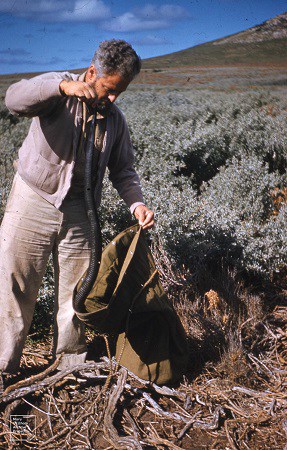
The average tiger snake is 1.1 metres long, and 3mg of its venom can kill a human. We’re happy to report that there’s an island where they grow far larger than normal – Chappell Island. The second of Australia’s constantly slithering tiger snake arenas, this is on the opposite side of the country, on the northeast coast of Tasmania instead.
The tiger snakes here may be a specific subspecies, Notechis ater serventyi, and commonly reach 2 metres. This is a dry, hospitable island, and the tiger snakes have to survive with barely any freshwater. Most of their moisture comes from swallowed prey or dew collected on scales.
No humans live here, and the only chance the tiger snakes get to eat is a 6 week period where mutton birds land. The oily birds provide a buffet where they go absolutely nuts, but then that’s it. The birds leave, the door to nourishment slams shut, and the tiger snakes must live off their energy reserves for 10 months until they return. It’s a harsh life on Chappell Island, but 3000 tiger snakes are believed to live there in total, accompanied by 0 humans.
